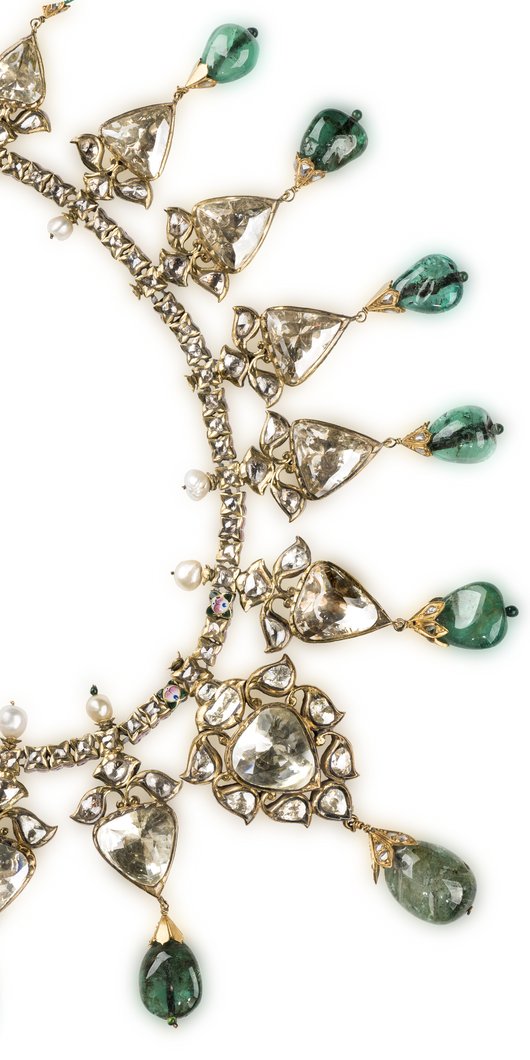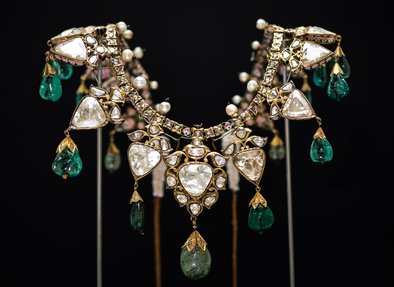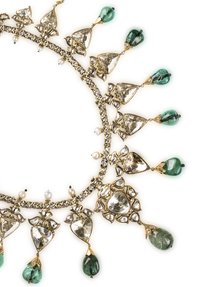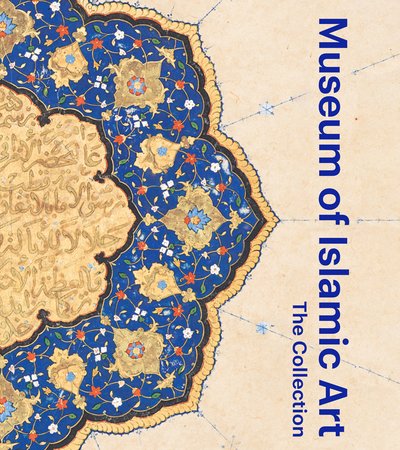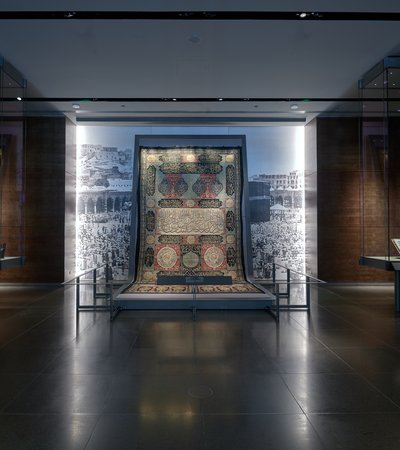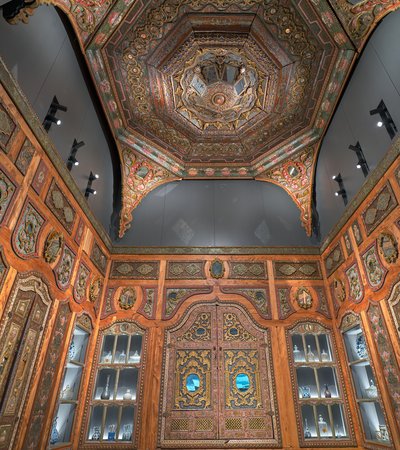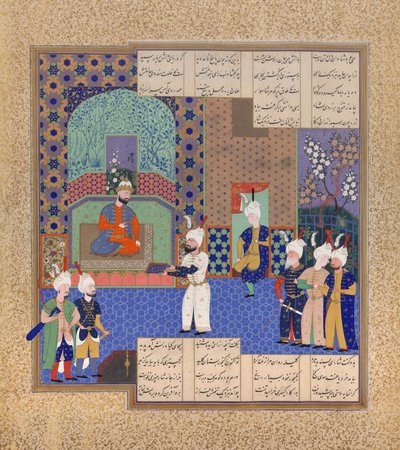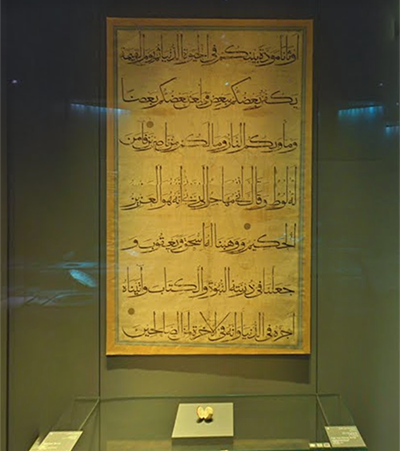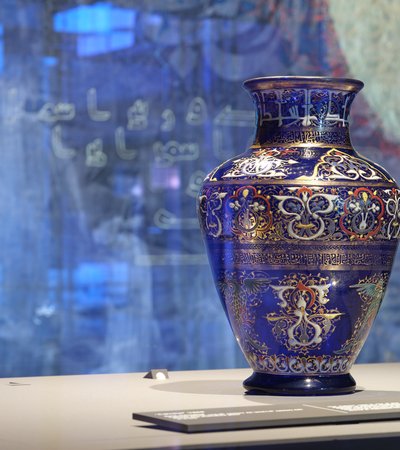Known simply as the ‘Varanasi-style’ necklace, due to its delicate and distinctive pink and white enamelwork, this stunning example of Mughal-era jewellery is on display in MIA’s Gallery 16 alongside other treasures of imperial South Asia.
The Mughal Dynasty (1526–1858 CE) ruled over most of northern India for nearly 300 years. During this period, India experienced significant cultural and artistic developments and, through a masterful blend of Persian, Indian and Central Asian influences, a unique artistic style emerged. Within the Mughal tradition, jewellery played an integral role in expressing authority.
This necklace, produced in the 13th century AH/19th century CE, was most likely given as a marriage or diplomatic gift from an Indian noble to a member of the royal family of Nepal.
